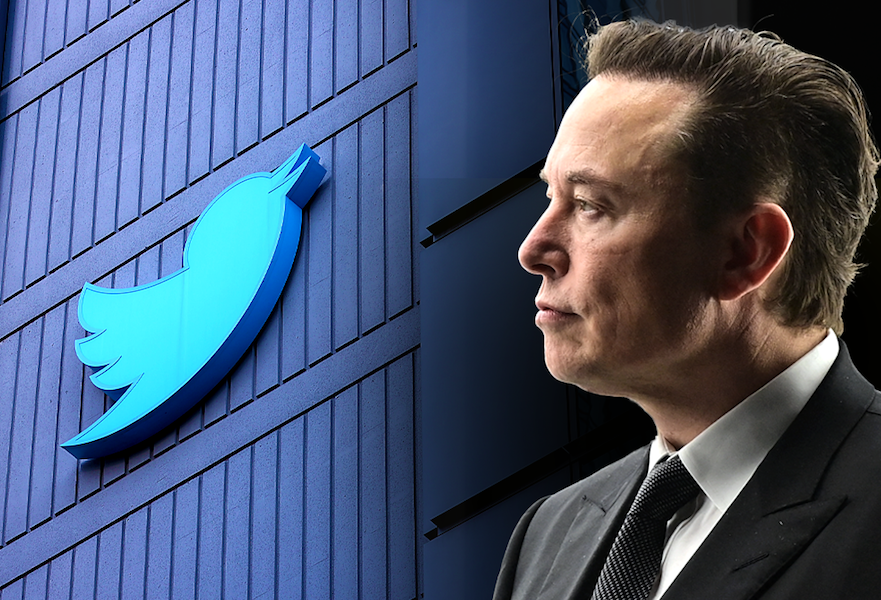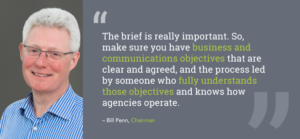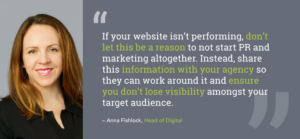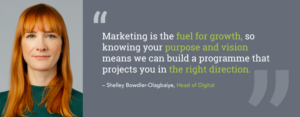Emerging trends for 2023 in the B2B marketing space (insights from the B2B Marketing Expo)

By Emi Ikemoto, digital marketing account manager, and Hebe Hughes, digital marketing account executive.
Industry events can be a great opportunity to network and learn but, during the pandemic, they were significantly impacted, with many organisations opting for virtual equivalents instead – even long after the easing of restrictions. However, the B2B Marketing Expo was held in London and the bustle of energy was undeniable. Speakers from a vast range of companies shared their knowledge and insights into emerging trends for 2023 in the B2B marketing space. We attended, and below are our key learnings from the day.
B2B buying
A trend seen across businesses is that many are engaging with potential customers too late. Approximately 70% of the buying process is not visible to the supplier, i.e. you.
We’re all familiar with the term ‘buying group’, but how familiar are you with buying group blindness? Most B2B buying decisions are made by groups rather than individuals, and research has shown that buying group size increases as the deal size increases, as does the number of interactions required.
So, what is buying group blindness? It refers to the situation where marketers and sales teams qualify leads on an individual basis, rather than looking at a group level. For example, a single user that downloads ten pieces of content will be qualified as a ‘hot’ lead and be pursued heavily.
However, having multiple people from the same business downloading one piece of content each is more valuable than a single, highly interested individual from another company; downloads from multiple people represent interest from a larger group within one business.
The issue is that in many cases, they may be qualified individually rather than as a group. Taking a group-centric view of leads will ensure that interest from a prospective business will be assessed by the aggregate value of individual employees’ behaviour.
Brand marketing: leveraging the human memory and situational cues
Continuing on the topic of buying, it should be noted that approximately 95% of a B2B company’s target audiences are not in a state to buy at any given time. With that being said, when a potential customer is ready to buy, they typically already have a brand in mind when it comes to creating RFPs and only consider 1.7 alternative suppliers on average.
These statistics highlight the importance of building and maintaining strong brand awareness so that when the time comes, your company is at the forefront of your target buying centre’s minds. How? Leverage human memory and situational cues in the marketing strategy.
Memories are highly situational. Research into context and state-dependent memory reveals that memory recall is improved when external cues present at the time of memory formation are recreated. Therefore, linking your brand messaging to buying situations through impactful campaigns will help trigger a potential customer’s memory of your brand when they encounter a similar situation. When customers think about you is equally as important as what customers think about you.
Finally, on memory and brand awareness, recency trumps frequency when it comes to marketing activity. When memory corrodes, sales fall: a study that looked at sales compared against advertising activity revealed that all brands were impacted by memory corrosion as sales declined year-on-year after advertising was stopped; with the rate of decline greater for smaller brands. Another interesting finding was the cases where companies took a year break from advertising and then began activity again; this restarting did not reverse the trend of decline in many cases, highlighting the negative impact of losing momentum.
As tempting as it may be to take a step back from marketing when purse strings tighten, these findings evidence the importance of advertising to sales and growth, and that it can be more costly to try to regain sales after a pause in advertising as memory in your target audience has corroded, rather than to maintain them.
How to win more sales and customers from organic LinkedIn
With over 800 million users, LinkedIn is a key platform to help B2B businesses win more sales and help gain customers. To do this, following a formatted process can help to increase wins on LinkedIn and reach your company’s goals.
The first step is setting objectives, which are crucial to increase sales and build brand awareness; this will help to set you up for the journey ahead. It can be useful to work backwards when setting these objectives, thinking about what you want to achieve and what steps you are going to take to get there! In this step, working out your priorities is essential to help you move forward and achieve your goals.
Having a clear understanding of the tools you are going to use to reach these targets is the next step. Having a functional tool to enable the specific execution of a task; a valuable tool using specific content and connections; and a resourceful tool through relationships, joining groups, events, and associations.
Your personal profile is the equivalent of an online landing page. It needs to showcase your credibility and authority and is the perfect way to represent yourself in the market you are targeting. Through this, you can connect with the people who are valuable to you and who will help to leverage your business. Seek out the people who you want to engage with and do just that!
Reviewing what works and doesn’t work is the final step to make sure you reach your goals on LinkedIn. This evaluation process ensures that what you are doing is correct and allows you to make any necessary changes in order to reach your objectives more successfully.
Value drives value
An important element for every company should be marketing with purpose and following a purpose-led decision strategy by placing organisational purpose at the core of everything they do. Hearing from the advertising team at Microsoft, they put purpose at the centre of the company and see glowing results. This helps to create a shared meaning between the customer and the brand. With purpose comes trust and loyalty.
Research by Microsoft has found that having trust in a product can increase sales by a substantial amount, a drive long term success. For example, there is a potential increase in sales by 4.7x in the financial service sector, highlighting the importance of trust and loyalty. From loyalty comes growth in responsibility, value and inclusion. These are all essential to any company and should be prioritised to help increase sales and create a positive environment for both the employees and the customer.
Want support with putting these insights into action? Get in touch with us to help you elevate your B2B marketing and achieve a successful 2023.
Related News
-

Getting AI to train your spokespeople
June 27, 2025 -

25 years of TradeTech – the good, the bad and the road ahead
May 19, 2025

















